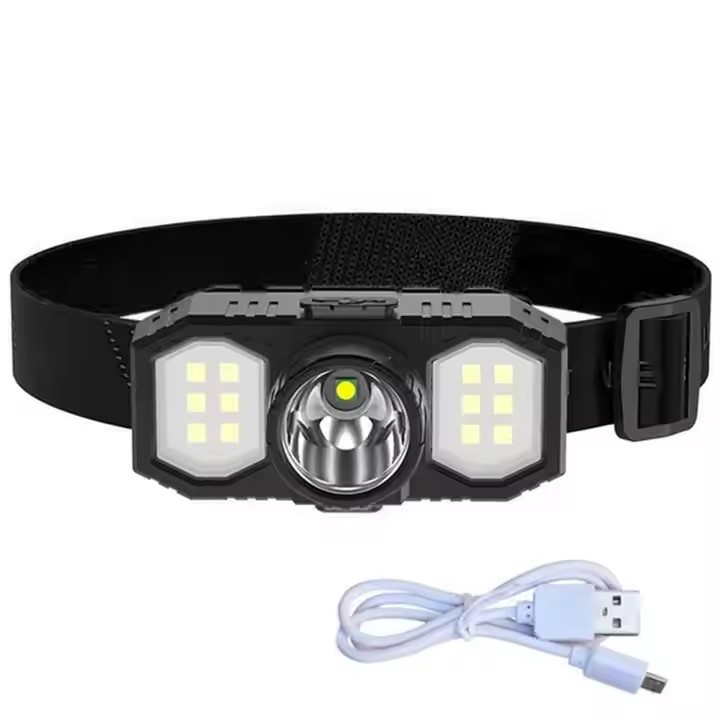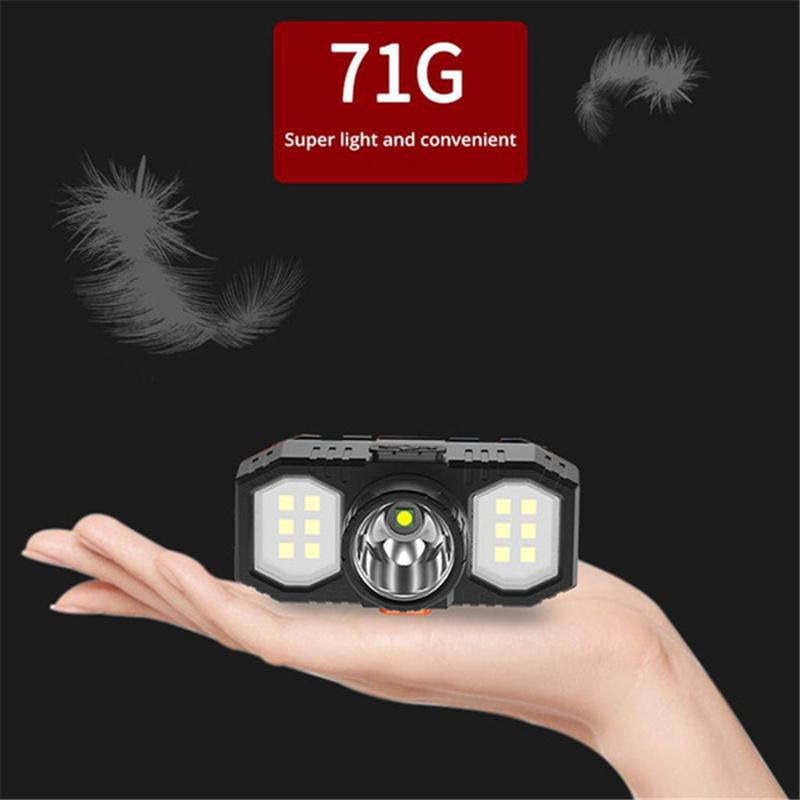Building Long-Term Partnerships with Flashlight Suppliers

Building long-term partnerships with flashlight suppliers strengthens your business in many ways. A strong supplier relationship ensures cost savings through better pricing and delivery schedules. It also improves product quality by meeting exact specifications. You gain access to innovative products, helping you stay ahead of competitors. However, challenges like cultural differences or communication gaps can arise. Misunderstandings about goals or lack of transparency may also hinder progress. By fostering trust and collaboration, you create a partnership that drives mutual success and gives you a competitive edge in the market.
Key Takeaways
Working with suppliers for a long time saves money and improves products.
Trust grows by talking often and keeping promises to suppliers.
Sharing goals with suppliers helps everyone succeed and create new ideas.
Using tools like supplier software makes teamwork easier and faster.
Checking performance often and fixing issues early keeps partnerships strong.
Understanding Supplier Relationships
Transactional vs. Strategic Partnerships
Not all supplier relationships are created equal. You can categorize them into two main types: transactional and strategic partnerships. Each serves a different purpose and offers unique dynamics.
Transactional Partnerships:
These focus on individual purchases with a short-term outlook.
Communication is limited and revolves around immediate needs.
Decisions are primarily price-driven, with minimal emphasis on long-term value.
Problem-solving tends to be reactive, addressing issues as they arise.
Loyalty is often absent, leading to frequent supplier switching.
Strategic Partnerships:
These emphasize a long-term outlook with mutual investment in growth.
Communication is open and frequent, fostering collaboration and shared planning.
Problem-solving is proactive, leveraging the expertise of both parties.
Goals are intertwined, focusing on mutual success and adaptability.
Trust and reliability are built over time, creating a stable foundation.
Understanding these differences helps you decide which approach aligns with your business goals. For example, companies like Toyota and Apple have thrived by prioritizing strategic partnerships, ensuring stability and innovation in their supply chains.
Benefits of Strategic Partnerships
Stability and reliability in the supply chain
Strategic partnerships provide a dependable supply chain. You can count on consistent delivery schedules and high-quality products. For instance, Walmart’s strong supplier relationships ensure product availability, even during high-demand periods. This reliability minimizes disruptions and keeps your operations running smoothly.
Cost efficiency and value creation
Long-term supplier relationships often lead to cost savings. By working closely with suppliers, you can negotiate better pricing and streamline processes. Procter & Gamble, for example, collaborates with its suppliers to co-develop products, reducing costs while enhancing innovation. This approach creates value for both parties.
Alignment of goals and shared success
Strategic partnerships align your goals with those of your suppliers. This alignment fosters shared success and long-term growth. Companies like BMW and Toyota demonstrate this by collaborating on sustainable innovations in electric vehicles. When your goals align, you and your suppliers can achieve greater milestones together.
By focusing on strategic partnerships, you strengthen supplier relationships and gain a competitive edge. These partnerships ensure stability, cost efficiency, and shared success, making them invaluable to your business.
Key Strategies for Building Long-Term Partnerships

Establishing Trust and Transparency
Honoring commitments and maintaining confidentiality
Trust forms the foundation of strong supplier relationships. You can build trust by consistently honoring your commitments. Deliver on promises related to payment terms, order volumes, and timelines. Suppliers value reliability, and your consistent actions will strengthen their confidence in your partnership. Maintaining confidentiality is equally important. Suppliers often share sensitive information, such as pricing strategies or production methods. Protecting this information demonstrates respect and fosters a collaborative relationship.
Sharing critical information openly
Transparency enhances trust. Engage suppliers as partners by sharing critical information openly. For example, if you anticipate changes in demand, inform your suppliers promptly. This proactive approach allows them to adjust their operations and meet your needs effectively. Encourage suppliers to share negative information without fear of repercussions. This openness helps address potential issues early, ensuring smoother operations.
Tip: Clear communication, consistent performance metrics, and collaborative problem-solving are key practices for fostering transparency.
Effective Communication Practices
Setting up regular communication channels
Effective communication is essential for successful supplier relationships. Establish regular communication channels, such as weekly calls or monthly meetings. These touchpoints ensure alignment on goals and expectations. Use digital tools like supplier management software to streamline communication and track progress in real time.
Addressing challenges promptly and collaboratively
Challenges are inevitable in any partnership. Address them promptly to prevent escalation. For instance, if a supplier faces delays, work together to find solutions. Collaborative problem-solving strengthens your partnership and demonstrates your commitment to mutual success. Companies like Toyota exemplify this approach by working closely with suppliers to resolve issues and optimize processes.
Aligning Goals and Objectives
Understanding end-user needs and shared priorities
Aligning goals with your suppliers ensures long-term success. Start by understanding the needs of your end-users. Share these insights with your suppliers to establish shared priorities. For example, Procter & Gamble collaborates with suppliers to co-develop products that meet consumer demands while enhancing sustainability.
Setting measurable objectives and KPIs
Measurable objectives provide clarity and direction. Use key performance indicators (KPIs) like defect rates, lead times, and contract compliance to track progress. These metrics help you and your suppliers evaluate performance and identify areas for improvement. A shared focus on measurable goals fosters accountability and drives continuous improvement.
Note: A shared vision encourages innovation and minimizes risks, creating a stronger foundation for your supplier relationships.
Leveraging Technology to Strengthen Supplier Relationships

Predictive Analytics for Better Planning
Forecasting demand and mitigating risks
Predictive analytics helps you anticipate supply chain challenges before they occur. By analyzing historical data and market trends, you can forecast demand more accurately. For example, a manufacturing firm used AI-driven predictive analytics to identify risks from a supplier in a politically unstable region. This insight allowed them to diversify their supplier base and avoid costly delays. Similarly, Walmart employs predictive analytics to analyze sales and online activity, enabling them to resolve inefficiencies proactively.
Key Benefits of Predictive Analytics:
Proactive risk mitigation prevents disruptions.
Improved supplier selection ensures consistent delivery.
Cost savings result from avoiding delays and inefficiencies.
Identifying opportunities for improvement
Predictive analytics also uncovers areas for optimization. It highlights inefficiencies in your supply chain and identifies suppliers who consistently meet performance standards. By leveraging these insights, you can refine your processes and strengthen supplier relationships.
Digital Tools for Collaboration
Supplier management software for streamlined operations
Digital tools simplify supplier collaboration. Supplier Relationship Management (SRM) software centralizes communication and documentation, eliminating silos. Platforms like GEP SMART automate data capture and standardize communication, making collaboration seamless. Real-time dashboards track KPIs, fostering transparency and trust. Companies like Toyota and Walmart use such tools to enhance efficiency and maintain strong supplier partnerships.
Automating processes for efficiency and accuracy
Automation reduces manual tasks and improves responsiveness. Procurement processes, for instance, become faster and more accurate with automation. Advanced analytics within these tools enable data-driven decisions, optimizing supplier performance and market strategies.
Enhancing Risk Management
Using data to address potential disruptions
Data plays a crucial role in identifying risks early. Continuous monitoring of supplier data reveals signs of financial instability or non-compliance. Comprehensive evaluations help you select reliable suppliers, minimizing risks related to quality and delivery.
Developing contingency plans with suppliers
Collaborating with suppliers on contingency plans ensures preparedness. You can monitor KPIs like inventory levels and lead times to detect potential shortages. Diversifying sourcing strategies and stockpiling critical materials further mitigate risks. For example, a global electronics manufacturer analyzes geopolitical events to create alternative supplier plans, ensuring production continuity.
Tip: Use detailed records and real-time updates to track supplier performance and compliance effectively.
Maintaining Long-Term Partnerships with Flashlight Suppliers
Conducting Regular Performance Reviews
Tracking supplier performance against KPIs
Regular performance reviews are essential for maintaining long-term supplier relationships. By tracking key performance indicators (KPIs) like delivery times, defect rates, and compliance, you can ensure consistent quality. These reviews help you identify inefficiencies early, allowing you to address them before they impact your operations. For example, monitoring supplier performance can mitigate risks like late deliveries or poor-quality products, protecting your business's reputation. Regular assessments also foster transparency, which builds trust and strengthens your collaborative relationship with suppliers.
Providing constructive feedback and recognition
Constructive feedback plays a vital role in improving supplier performance. Use factual information to base your feedback on observed behaviors rather than assumptions. Be direct and specific about areas needing improvement, and tie your feedback to larger company goals. For instance, if a supplier struggles with meeting deadlines, explain how this affects your production schedule. Recognize positive behaviors as well, such as consistently meeting quality standards. This balanced approach fosters trust and encourages open dialogue. Make performance reviews a two-way conversation to understand what suppliers need to succeed. Regular check-ins maintain engagement and ensure continuous improvement.
Proactive Problem-Solving
Resolving issues before they escalate
Proactive problem-solving is key to building long-term partnerships with flashlight suppliers. Establish clear communication channels to address potential issues early. For example, if a supplier anticipates delays, work together to find solutions before they disrupt your supply chain. Treat suppliers as strategic partners to foster mutual trust and collaboration. Continuous performance monitoring helps you identify risks and resolve them promptly, ensuring smooth operations.
Collaborating on innovative solutions
Collaborating with suppliers on innovative solutions enhances competitiveness. Companies like Toyota and its Tier 1 suppliers demonstrate this by optimizing processes through the Toyota Production System. Similarly, Procter & Gamble co-develops products with suppliers to improve sustainability. By working together, you can create solutions that benefit both parties. This approach strengthens supplier relationships and drives mutual success.
Investing in Relationship Building
Hosting joint workshops and training sessions
Investing in relationship-building activities creates stronger supplier relationships. Hosting joint workshops and training sessions improves communication and fosters collaboration. These events provide opportunities to align on goals and share best practices. For example, training sessions can help suppliers understand your quality standards, ensuring better outcomes. This investment builds trust and supports long-term growth.
Celebrating milestones and successes
Celebrating milestones strengthens your partnership with suppliers. Acknowledge achievements like meeting delivery targets or launching a new product. These celebrations show appreciation and reinforce trust. Strong supplier relationships lead to greater collaboration and joint problem-solving. Over time, this creates a competitive advantage and ensures the success of your long-term supplier relationships.
Building strong supplier relationships also helps mitigate risks and manage crises effectively. When you and your suppliers trust each other, you can work together to anticipate and address potential challenges.
Establishing Predictable Practices
Adhering to reasonable payment terms
Establishing predictable payment terms builds trust with your flashlight suppliers. When you honor payment agreements consistently, suppliers feel valued and secure in the partnership. This reliability encourages them to prioritize your orders and maintain high-quality standards. For example, offering net-30 or net-60 payment terms provides suppliers with the financial stability they need to manage their operations effectively.
Clear payment schedules also reduce misunderstandings and disputes. Use digital tools to automate payments and ensure accuracy. This approach minimizes delays and fosters a sense of professionalism. Suppliers who trust your payment practices are more likely to collaborate on innovative solutions and support your long-term goals. Predictable payment terms not only strengthen relationships but also contribute to cost efficiency by avoiding penalties or interest charges.
Tip: Regularly review your payment terms to ensure they remain competitive and fair for both parties.
Developing long-term contracts for stability
Long-term contracts provide a foundation for stable supplier relationships. These agreements outline expectations, pricing, and delivery schedules, reducing uncertainties for both you and your suppliers. Fixed-price contracts, for instance, protect against market fluctuations, ensuring consistent costs. Similarly, cost-plus contracts allow suppliers to cover expenses while earning a fair profit, fostering mutual trust.
Contracts like co-development agreements encourage suppliers to invest in your projects. For example, in the consumer goods industry, suppliers often collaborate on product innovations under long-term agreements. This shared commitment drives innovation and strengthens partnerships. A study by Stanford faculty highlights that combining fixed-price contracts with open-market trading enhances supply chain efficiency, benefiting both businesses and consumers.
Long-term contracts also mitigate risks. Suppliers with secure agreements are more likely to prioritize your needs during disruptions. This reliability ensures consistent delivery and quality, giving you a competitive advantage in the market.
Advantages of Predictable Practices:
Advantage | Description |
|---|---|
Cost Efficiency | Effective supplier relationships can lead to significant cost savings through better pricing. |
Quality Improvement | Suppliers who understand your business needs are more likely to deliver higher quality products. |
Innovation | Strong supplier relationships foster collaboration and innovation. |
Reliability and Consistency | Reliable suppliers ensure consistent delivery of materials and services. |
Risk Mitigation | Good relationships with suppliers can help mitigate risks such as supply chain disruptions. |
Competitive Advantage | Businesses that manage supplier relationships effectively can achieve a competitive advantage. |
By adhering to reasonable payment terms and developing long-term contracts, you create a stable and trustworthy foundation for long-term supplier relationships.
Building long-term partnerships with flashlight suppliers is essential for sustained success. These relationships ensure stability, cost efficiency, and innovation, giving your business a competitive edge. By fostering trust, maintaining open communication, and aligning goals, you create a foundation for mutual growth. Tools like supplier management software and predictive analytics streamline operations and enhance collaboration. Regular performance reviews and proactive problem-solving further strengthen supplier relationships. Companies like Toyota and Procter & Gamble demonstrate how strategic partnerships drive innovation and resilience. Prioritize these partnerships to secure long-term supplier relationships and achieve lasting growth.
FAQ
What are the key benefits of building long-term partnerships with flashlight suppliers?
Long-term partnerships provide stability, cost savings, and consistent quality. They also foster innovation through collaboration and ensure reliable supply chains. These relationships help you align goals with suppliers, creating mutual success and a competitive edge in the market.
How can you establish trust with flashlight suppliers?
You can build trust by honoring commitments, maintaining confidentiality, and sharing critical information openly. Consistent communication and transparency strengthen the relationship. Suppliers value reliability, so delivering on promises is essential for fostering trust.
Why is aligning goals with suppliers important?
Aligning goals ensures both parties work toward shared success. It helps you meet end-user needs, set measurable objectives, and drive innovation. When your priorities match, you and your suppliers can achieve greater efficiency and long-term growth.
What role does technology play in supplier relationships?
Technology streamlines operations and enhances collaboration. Tools like supplier management software improve communication and track performance. Predictive analytics helps you forecast demand and mitigate risks, ensuring smoother supply chain management.
How do regular performance reviews benefit supplier relationships?
Performance reviews help you track key metrics like delivery times and quality standards. They allow you to provide constructive feedback and recognize achievements. This process fosters accountability, strengthens trust, and ensures continuous improvement in your partnership.
See Also
Building Strategic Alliances with Wholesale Flashlight Suppliers
Assessing Flashlight Suppliers: Important Factors and Current Trends
Boosting Profits by Sourcing Flashlights from Wholesalers
Selecting The Right Flashlight Supplier For Your Business
Turning Challenges Into Triumphs: Finding Trustworthy Flashlight Suppliers
